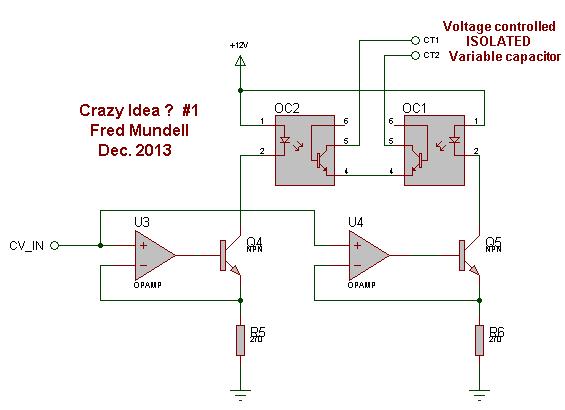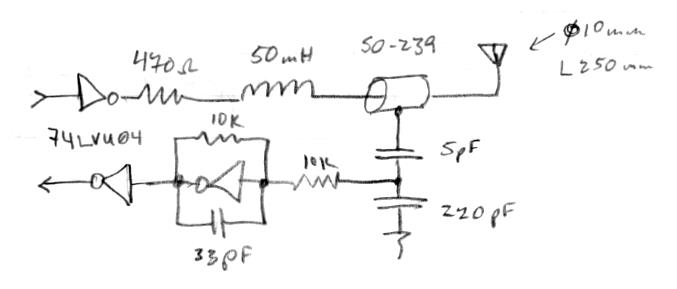Over on another thread, Dewster presented some "Crazy" technical suggestions and numbered these crazily..
Thinking about electronic tuning of theremins, I have had a few idea I have never seen anyone do, which look crazy -
And I thought .. A thread for potentially completely crazy ideas which just might work, and would like to invite anyone able to comply with the "rules" I am going to present, to submit them..
The rules:
There must be some thought process behind the idea - This is a theory / electronics / science / maths FOR THEREMINS forum.. So no circuits or whatever (Please!) which are just a collection of components with a "what will this do?" or a "this is a time machine - dont know how its supposed to work, I was just inspired"
You must be able to explain your theoretical thinking on anything you present - flawed thinking is fine.
----------------
Below is my starting contribution - its a pair of opto isolators wired such that one transistor will always be reverse biased whatever polarity the connection to the "VC Capacitor" terminals are.
I hypoothesise that this will behave like a capacitor, and that by controlling the LED current, the width of the P Channel region 'between' the Emitter and collector will vary - as this width is controlled by light, there is no electrical coupling - so its an isolated current / voltage controlled capacitor.
Each isolator has a reverse breakdown voltage - cheaper opto isolators usually have this at about 30V max . they can have much higher voltages I think. So this VC capacitor could be connected directlt to some theremin antennas (?) .. Series diodes with high revers voltage could probably be added for higher antenna voltages.. they could stop destructive breakdown currents but im not sure theyd work - not sure if excess reverse voltage has some other destructive action.
I have simulated this circuit with a spice model from the web, and to my great surprise it worked.. But I do not trust this at all - because I havent found the required data to construct a behavioural model for an OC used in this way..
My simulation does however behave how I would expect - there is a large capacitive change (which I monitor in the simulation by change in oscillator frequency) - far greater than I get from standard reverse biased diodes - My understanding is the the base on opto transistors is much larger than on standard diode or transistor junctions.. This is to optimise light collection and has a down-side of slowing the speed of the devices - low cost ones can be as slow as 5us, and one reason is the large base capacitance.




